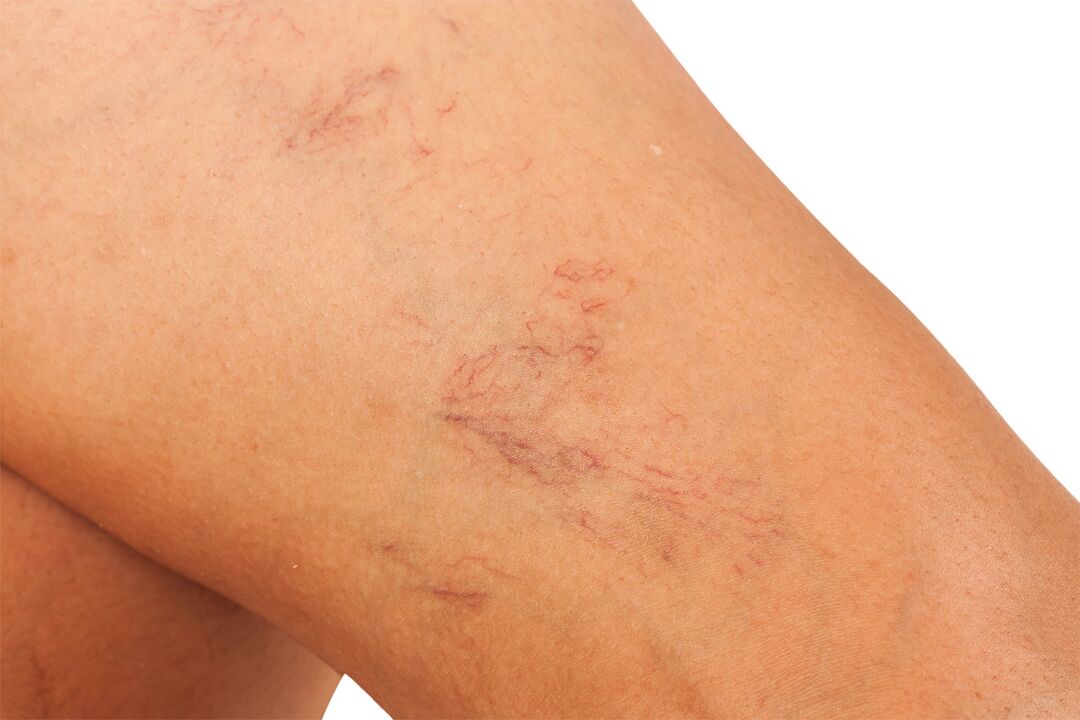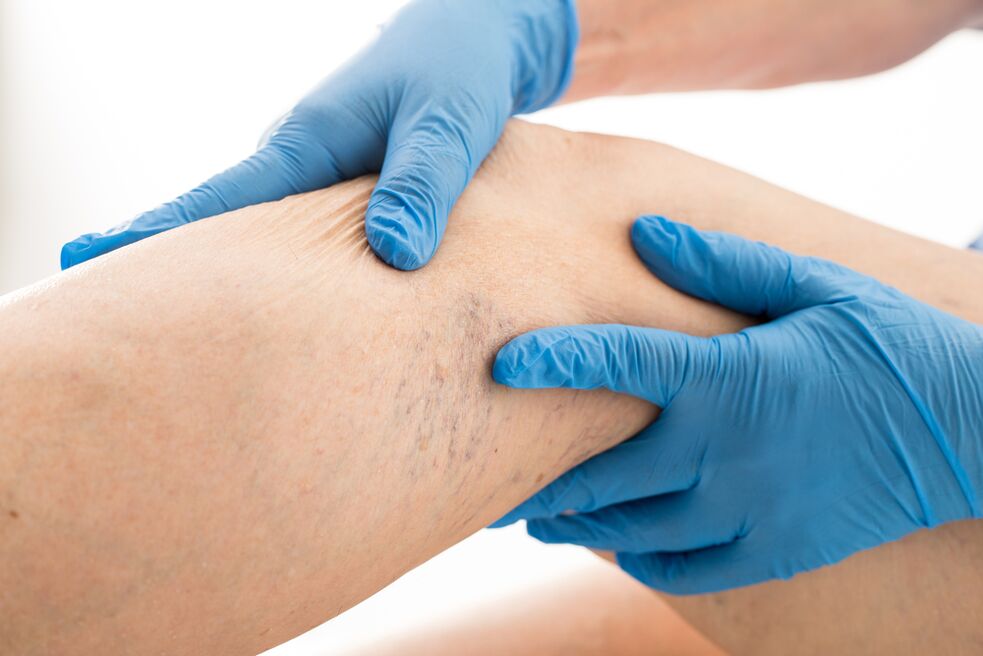Probably every third or even every other person today suffers from varicose leg veins or predisposes. This has become a real disaster, especially when you think about what our legs undergoing today. You need to know about which varicose veins are dangerous before the occurrence of your first signs.
What are varicose veins

Varicosis on the legs is a chronic disease, in which veins are wider on their feet, creating nodes, as a result of the blood flow is upset, and the blood remains in the venous system. In the disease, lumen vein spreads, as a result of blood from blood from their feet in veins, veins on their feet have valves that pass the blood just upstairs, which does not allow blood only in their legs. If the works of such valves is disturbed, the blood begins to move in a different direction, ie stagnates in their legs.
Causes of varicose veins on their feet in women and men
Among the causes of varicose veins on their feet are referred to, primarily hereditary predispositions for this disease. If in your family, someone has varicose veins on their feet, then the risk of getting sick for you is extremely great, because the disease is due to hereditary weakness of the venous wall - one of the most common causes.
Varicose veins on their feet are mostly female disease, because wearing high shoes are significantly increasing the risk. In addition, hormonal shaking is added to the fire during pregnancy or menopause, which express the spread of veins in women.
The most often the women of the leg are sick after forty-being years, but at the younger age is often found. Most often, in adolescents or young people, the burglary is developing due to arterio-venical fistula-open messages between veins and arteries.
Spreading veins on their feet is in men, by the nature of the profession, giving the legs with a large load. This disease is often sick with people who lead a sitting lifestyle, spend a lot of time standing, move a little. Closing unpleasant shoes, as well as extra pounds, contribute to forming stagnation. Liver diseases, such as cirrhosis or hepatitis, can cause varicose veins on their feet.
This disease is also quite common among athletes, and that suggests that excessive physical activity can also provoke.
Symptoms and signs
In the initial phase, the symptoms of varicose veins on their feet are not obvious, the disease may occur significantly. Or are the signs of widening the venus obvious - great veins of the veins on their feet are starting to protrude under the skin, but the person does not experience any pain. Vienna can manifest, gradually protruding through the skin and can manifest after heavy physical exercises or hard work. It happens that veins appear suddenly after the person spent the whole day on his feet in the heat.
But if, when inspecting the lower leg, you noticed that there were veins under the skin, that there were places with skinny extensions, and the veins themselves are swollen when standing and falling to bed, you most likely start varicose veins.
Another symptom is swelling of the legs during the day during sitting, standing, walking, as well as a reduction in swelling in a false position.
The bright characteristic of the disease is also the pigmentation of the inner surface of the leg - the skin is compacted, becomes less elastic, acquires a painful shine. In areas with such skin, hair decreases.
Varicosis is characterized by a constant sense of fatigue in legs, pain and burning. The person is tired quickly, sometimes convulsions are observed.
Diagnostics and treatment: medications, operations, folk drugs
Varicose was diagnosed when examining the surgeon by experts, as well as on the basis of data from the ear of the veins. Pfebography is also performed, ie contrasting dyeing substances were introduced into the blood, and after which veins are studied.
Treatment depends on what stage is a disease in, and about whether the disease is accompanied by complications. Treatment can be based on conservative and surgical methods. Conservatively means wearing socks or tights, using internal and external use medications. Conservative ways of treatment include sclerotherapy and laser radiation. In particularly complex cases of veins are removed surgically.

A person who suffers from varicose veins of their legs should know that in the event of a sudden rise leg in leg, fever and skin compaction, it is necessary to call a doctor urgently. Such an attack can be accompanied by the lack of breath, a sense of lack of air, weaknesses, as well as bleeding.
Expert opinion: How about varicose veins? Spraying the extended vein, inflammation of thrombus is thrombophlebitis. This disease can occur at elevated body temperature. Part of the thrombus can be broken and entered into the pulmonary artery, which will cause shortness of breath and further development of serious life - symptoms.
Don't in such cases with the treatment at home - call a doctor.
The most efficient and more radical way to treat varicose veins of the legs is, of course, surgery. The operations resorts if conservative methods of treatment are inefficient. The essence of the operation is reduced to the fact that through small cutting on the skin, the surgeon removes extended veins. Then the leg is thoroughly tied, and after a few hours, the patient can quite stand and even walk. This may be the only guaranteed way to address serious consequences of the disease.
People's medicines can help treat traditional methods or alleviate the patient's condition. Thus, the main components when creating medicines are:
- Horse chestnut;
- Kalanchoe;
- Sagebrush;
- White bark from willow;
- Mokrin;
- Celanda;
- Cabbage.
Popular products based on animal fat, apple vinegar, beekeeping products (honey, propolis), body, clays and other components will also help heal the disease.
Consequences of varicose vein
Varicose veins of the legs cannot be left alone, must be treated, because, developed, this disease can lead to many unpleasant and sad consequences. Thus, varicose veins can be complicated with eczema and dermatitis - inflammatory skin diseases, whose cause is just stagnation of venous blood. The eczema is characterized by the appearance of foci redness on the skin, and the edges of this redness are uneven, the skin in these places appear itchy and cracks or bubbles.
Varicose eczema, in turn can be developed in a trophic ulcer. The trophic ulcer is also a complication of varicose veins - it is an ulcer that does not heal for a long time on the skin in the lower leg. The trophic ulcer begins with a shallow ulcer, which characterizes a bloody or transparent liquid at the bottom. This is an extremely painful wound that can ruin the life of the person - leads to a violation of life, sleep.
One of the most common complications of varicose veins on their feet is thrombophlebitis, ie the inflammation of the veins, followed by the formation of blood clot or clot blood. Trombofflebis usually accompanies strong pain when walking, fever, skin redness and stamp formation. With thrombophlebitis, the ripples of the vein at the point of expansion, as a result, forms the bleeding. In this case, it is necessary to call a doctor immediately.























